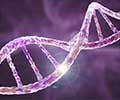Drawing on the power of DNA sequencing, researchers at the National Institutes of Health have identified a new group of genetic mutations involved in the deadliest form of skin cancer, melanoma.
Drawing on the power of DNA sequencing, researchers at the National Institutes of Health have identified a new group of genetic mutations involved in the deadliest form of skin cancer, melanoma.
This discovery is particularly encouraging because some of the mutations, which were found in nearly one-fifth of melanoma cases, reside in a gene already targeted by a drug approved for certain types of breast cancer.In the United States and many other nations, melanoma is becoming increasingly more common. A major cause of melanoma is thought to be sun exposure; the ultraviolet radiation in sunlight can damage DNA and lead to cancer-causing genetic changes within skin cells.
In work published in the September issue of Nature Genetics, a team led by Yardena Samuels, Ph.D., of the National Human Genome Research Institute (NHGRI) sequenced the protein tyrosine kinase (PTK) gene family in tumor and blood samples from people with metastatic melanoma. The samples were collected by the study's coauthor Steven Rosenberg, M.D., Ph.D., a leading expert on melanoma and chief of surgery at the National Cancer Institute (NCI).
The PTK family includes many genes that, when mutated, promote various types of cancer. However, relatively little had been known about roles played by PTK genes in human melanoma. The NIH study was among the first to use large-scale DNA sequencing to systematically analyze all 86 members of the PTK gene family in melanoma samples.
The team's initial survey, which involved samples from 29 melanoma patients, identified mutations in functionally important regions of 19 PTK genes, only three of which had been previously implicated in melanoma. The researchers then conducted more detailed analyzes of those 19 genes in samples from a total of 79 melanoma patients.
One of the newly implicated genes stood out from the rest. Researchers detected mutations in the ERBB4 gene (also known as HER4) in 19 percent of patients' tumors, making it by far the most frequently mutated PTK gene in melanoma. In addition, researchers found that many ERBB4 mutations were located in functionally important areas similar to those seen in other PTK oncogenes involved in lung cancer, brain cancer and gastric cancer.
Advertisement
Encouraged by their study results, the researchers are planning a clinical trial using lapatinib in patients with metastatic melanoma harboring ERBB4 mutations. The clinical trial will be conducted under the direction of Dr. Rosenberg at the NIH Clinical Center. "This collaborative study represents an ideal example of how sophisticated genetic analyzes can be translated to the benefit of cancer patients," said Dr. Rosenberg.
Advertisement
In addition to ERBB4, the researchers identified two additional PTK genes, FLT1 and PTK2B, with a relatively high rate of mutations in melanoma. Each of these genes was mutated in about 10 percent of the tumor samples studied.
NHGRI Scientific Director Eric D. Green, M.D., Ph.D., pointed out how such research is helping to lay the groundwork for the era of personalized medicine. "We envision a day when each cancer patient will have therapies tailored to the specific genetic profile of his or her tumor. Ultimately, this should lead to more effective and less toxic approaches to cancer care," said Dr. Green, who directs the NIH Intramural Sequencing Center, which generated the DNA sequence data for the melanoma study.
In addition to NIH scientists, the team included a researcher from the Johns Hopkins Kimmel Cancer Center in Baltimore.
In May 2009, Dr. Samuel's group reported in Nature Genetics another large-scale DNA sequencing study of a different group of genes involved in melanoma, the matrix metalloproteinase (MMP) gene family. This earlier study found that one gene, MMP-8, thought to spur cancerous growth actually served to inhibit it. Those findings are now helping to shape melanoma treatment strategies aimed at MMP genes.
Source-Eurekalert
ARU














